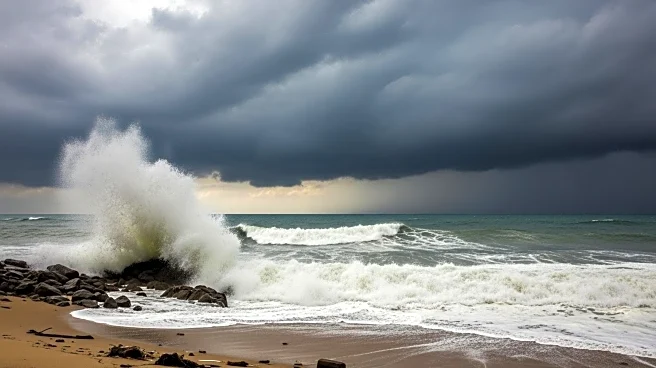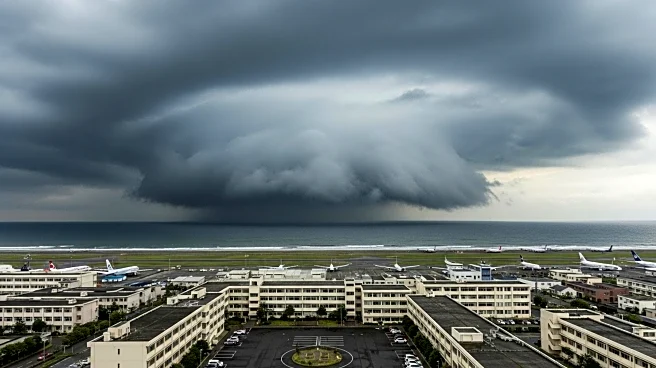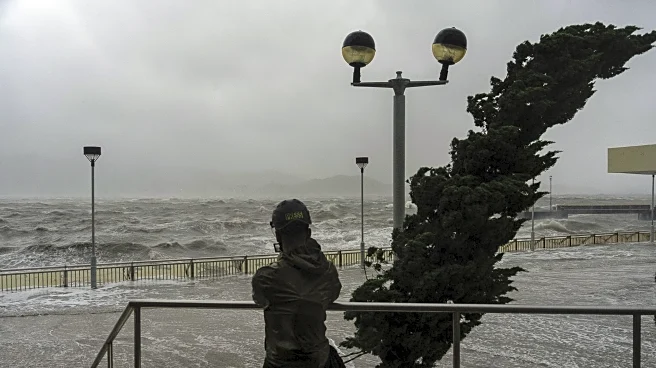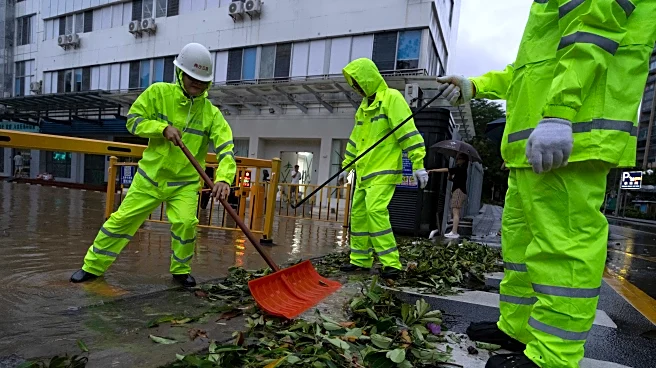What's Happening?
Typhoon Ragasa, the most powerful typhoon of the year, has significantly impacted Hong Kong and southern China's Guangdong province. The storm caused a temporary halt to businesses, transportation, and schools. After sweeping through the Philippines and Taiwan, where it resulted in 14 fatalities, Ragasa made landfall in Yangjiang, China. Hong Kong's international airport resumed operations after a 36-hour suspension, with all three runways now operational. Authorities are focused on repairing infrastructure, including collapsed roads, and addressing over 1,000 fallen trees and 85 flooding incidents. In Taiwan, rescue operations continue, with 22 people still missing and 54 reported injuries.
Why It's Important?
The typhoon's impact highlights the vulnerability of densely populated urban areas to extreme weather events, exacerbated by climate change. The disruption in Hong Kong, a major global financial hub, underscores the economic risks posed by natural disasters. The recovery efforts in China and Taiwan are critical for restoring normalcy and preventing further economic losses. The situation also raises questions about infrastructure resilience and emergency preparedness in the face of increasingly severe weather patterns.
What's Next?
As recovery efforts continue, authorities in Hong Kong and China will likely assess the damage and implement measures to enhance infrastructure resilience. The focus will be on improving emergency response systems and reinforcing critical infrastructure to withstand future storms. The international community may also engage in discussions on climate change adaptation strategies to mitigate the impact of such natural disasters.












